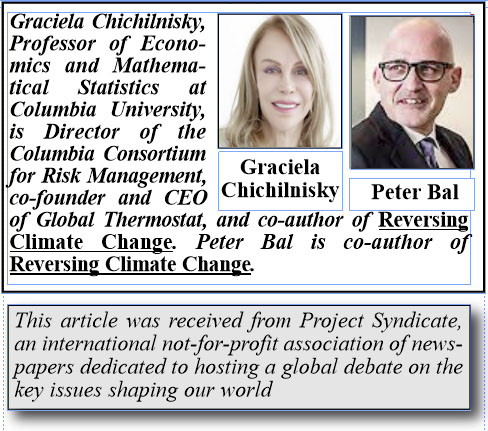NEW YORK – The climate crisis and the 2008 financial crisis are two sides of the same coin. Both were born of the same toxic feature of the world’s prevailing economic model: the practice of discounting the future. Protecting humanity from both environmental and financial ruin requires an entirely new approach to growth – one that does not sacrifice tomorrow at the altar of today.
In a sense, both crises can be traced back to the same event: the creation of a new international order after World War II. The Bretton Woods institutions that underpinned the order – the World Bank and the International Monetary Fund – encouraged rapid globalization, characterized by a sharp increase in resource exports from the Global South to the Global North. The revival of neoliberal economic policies – including the removal of trade barriers, wide-ranging deregulation, and the elimination of capital-account controls – in the late 1970s accelerated this process.
While this system spurred unprecedented economic growth and development, it had serious downsides. Financial innovations outpaced – or simply escaped – regulation, enabling the finance industry to expand its influence over the economy, assuming massive amounts of risk and reaping huge rewards. That eventually led to the 2008 crisis, which brought the global financial system to the brink of collapse. With the system having undergone little meaningful reform, acute systemic risks persist to this day.
On the environmental front, unbridled resource extraction destroyed developing-country ecosystems, while encouraging rapidly rising consumption – most fundamentally, of energy – in the developed world. Today, despite accounting for only about 18% of the global population, the advanced economies consume about 70% of the world’s energy, the vast majority of which (87%) comes from fossil fuels.
The North-South divide is thus inextricably linked to carbon dioxide emissions. And, in fact, it has reared its head in every United Nations climate negotiation, with the countries that have contributed the most to climate change – beginning with the United States – often standing in the way of effective action.
Resistance usually comes down to a single consideration: current economic prosperity. Thus, the only realistic solution to the climate crisis is to replace fossil-fuel-based energy with renewables quickly and cost-effectively enough to keep the engines of growth running. Fortunately, we already know that this is possible. The key is a global carbon market.
The 1997 Kyoto Protocol attempted to use a system of tradable quotas to establish a price on CO2 emissions. While several countries ultimately refused to join the protocol – the US signed, but didn’t ratify it – the carbon market that it created (designed by one of us, Chichilnisky) helped to make clean energy more profitable and dirty energy less so.
Although the Kyoto Protocol collapsed, the world has built upon this work, and some of its largest economies – China, the European Union, and several US states, including California – are now using emissions-trading schemes. The value of traded global markets for CO2 allowances surged by 250% last year, and now exceeds $178 billion annually.
A revived global carbon market would help cut the Gordian knot of economic growth and environmental degradation. Moreover, it would cost virtually nothing to create and operate. A scheme offering market-based efficiency would appeal to developed economies, while developing countries would support it because mandatory emissions limits would apply only to high- and middle-income economies, as was the case in the Kyoto Protocol.
The potential of a global carbon market continues to grow. Last year, the US National Academies of Science, Engineering, and Medicine and the Intergovernmental Panel on Climate Change reported that “negative emissions technologies” that remove and sequester CO2 from the air could be safely scaled up to capture and store a significant share of total emissions. This process would be so cost-effective that the captured CO2 could profitably be sold in the carbon market.
Of course, CO2 emissions are far from the only contributor to the climate crisis. But other types of green markets can also be created. Even before the Kyoto Protocol, the Chicago Board of Trade launched a private market for rights to emit sulfur dioxide. The UN is now considering using similar markets to protect biodiversity and watersheds.
By enabling actors to buy and sell rights to use the global commons, such green markets naturally combine efficiency and equity. And yet the enduring North-South divide – and especially the rift between the US and China – is hampering our ability to seize their potential. We have the tools to arrest, and even reverse, climate change. It is time to come together and use them.
Copyright: Project Syndicate, 2019.











